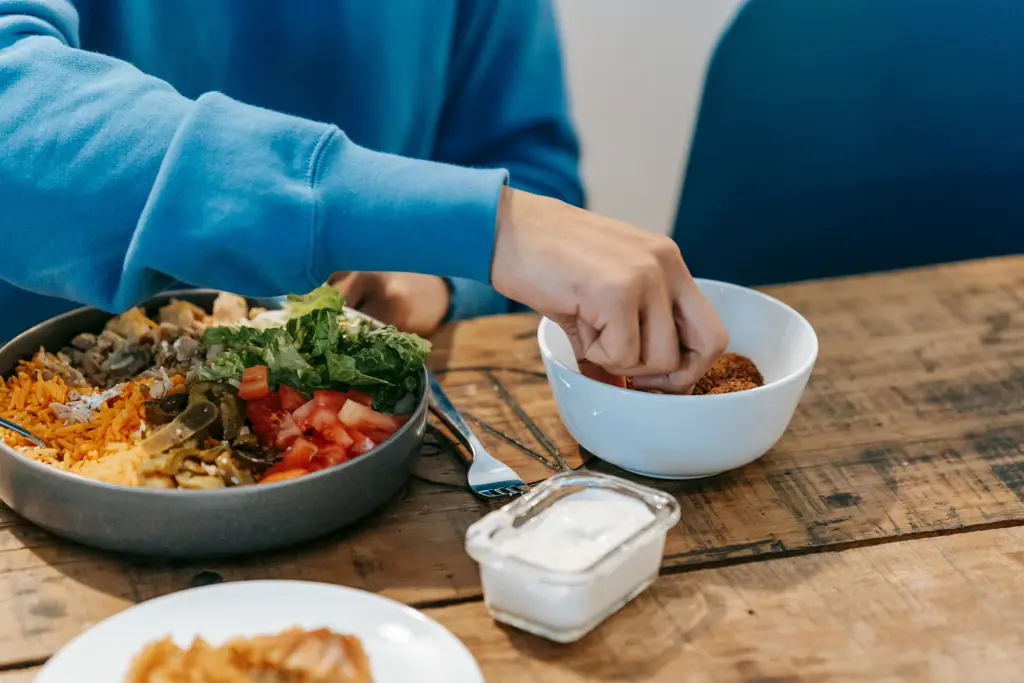Chicken shawarma, a culinary delight enjoyed globally, boasts a rich history deeply intertwined with the vibrant cultures of the Middle East. Its origins are often traced back to the Ottoman Empire, where the method of vertical roasting meat—a technique known as shawarma (meaning to turn in Arabic)—was already practiced. While the exact timeline is debated, the widespread popularity of shawarma, particularly in its chicken iteration, emerged significantly in the 20th century, spreading rapidly throughout the Levant and beyond. The invention of the vertical rotisserie, which allows for continuous cooking and serving of succulent meat, was a key element in its success, making it a practical and efficient food service option.
The cultural significance of shawarma is immense. It transcends mere sustenance; it’s a symbol of social gatherings, street food culture, and a testament to culinary innovation. In countries like Lebanon, Syria, and Israel, shawarma stands as a quintessential part of the national culinary identity. It’s not uncommon to find shawarma stands on almost every street corner in major cities across the Middle East, serving as a quick, affordable, and delicious meal for all walks of life. Its adaptability is another key factor in its enduring popularity – variations exist across different regions, each boasting unique spice blends and accompanying ingredients. This adaptability has also contributed to its global reach, with variations found in Western countries often incorporating local tastes and preferences.
The economic impact of shawarma is also noteworthy. It represents a significant industry, providing employment for countless individuals involved in everything from meat preparation and cooking to serving and distribution. Estimates suggest that the global shawarma market is worth billions of dollars, with continuous growth anticipated. This widespread popularity is further evidenced by the countless shawarma restaurants and food trucks found not only in Middle Eastern countries but also in North America, Europe, and Asia. The dish’s adaptability, affordability, and delicious flavor profile have contributed to its remarkable global success, making it a truly international culinary phenomenon. This recipe will guide you through creating a delicious and authentic chicken shawarma experience at home, allowing you to enjoy a taste of this rich culinary heritage.
Ingredients and Measurements
Creating delicious Chicken Shawarma hinges on using high-quality ingredients and precise measurements. Don’t skimp on the spices – they are the heart and soul of this dish! The following recipe yields approximately 6 servings.
For the Chicken Marinade:
- 1.5 lbs boneless, skinless chicken thighs: Chicken thighs are preferred over breasts because they stay more tender and juicy during the long marinating and cooking process. Cut the thighs into 1-inch cubes for even cooking.
- 1 cup plain yogurt: Full-fat yogurt is best for richness and creaminess. It also helps tenderize the chicken.
- 1/4 cup lemon juice: Freshly squeezed lemon juice provides the best flavor and acidity. Avoid using bottled lemon juice as it often contains preservatives.
- 2 tablespoons olive oil: Adds richness and helps the spices adhere to the chicken.
- 2 tablespoons lemon zest: Enhances the citrus notes of the marinade.
- 2 tablespoons paprika: Smoked paprika is highly recommended for a deeper, smoky flavor. Use a good quality paprika for the best results.
- 1 tablespoon ground cumin: Essential for authentic Shawarma flavor.
- 1 tablespoon ground coriander: Adds warmth and complexity.
- 1 teaspoon garlic powder: A convenient way to add a significant amount of garlic flavor.
- 1 teaspoon onion powder: Complements the garlic and adds depth.
- 1 teaspoon ground cinnamon: A subtle yet important spice that adds warmth and a hint of sweetness.
- 1/2 teaspoon cayenne pepper (optional): Adjust to your spice preference. Start with less and add more if desired.
- 1 teaspoon salt: Essential for seasoning. Adjust according to your taste.
- 1/2 teaspoon black pepper: Freshly ground black pepper is always best.
For Serving (optional):
- Pita bread: Warm pita bread is traditional for serving Shawarma.
- Hummus: A creamy chickpea dip that complements the Shawarma perfectly.
- Tahini sauce: A sesame seed paste sauce adds a nutty and creamy element.
- Tomato and cucumber salad: A refreshing side dish to cut through the richness of the Shawarma.
- Pickled turnips or onions: Adds a tangy and crunchy element to the meal.
Important Note: It is crucial to marinate the chicken for at least 4 hours, preferably overnight in the refrigerator, to allow the flavors to fully penetrate. This step is essential for achieving tender and flavorful Shawarma.
Professional Recommendation: For an even richer flavor, consider using a combination of both ground and whole spices. Lightly toast the whole spices (cumin and coriander) in a dry pan before grinding them for a more intense aroma.
Marinade Preparation
The marinade is the heart and soul of a delicious chicken shawarma. A well-balanced marinade will tenderize the chicken, infuse it with vibrant flavor, and create a beautifully browned exterior. This recipe yields enough marinade for approximately 2 lbs (900g) of boneless, skinless chicken thighs, which are ideal for shawarma due to their moisture and flavor retention. Feel free to adjust the quantities proportionally if using a different amount of chicken.
Ingredients:
- 1 cup (240ml) plain yogurt (full-fat recommended for richness): Choose a good quality yogurt, preferably Greek yogurt for its thickness and tang.
- 1/2 cup (120ml) lemon juice (freshly squeezed is best): Freshly squeezed lemon juice provides a superior brightness and flavor compared to bottled juice.
- 1/4 cup (60ml) olive oil: Use a good quality extra virgin olive oil for the best flavor.
- 2 tablespoons paprika (smoked paprika is preferred): Smoked paprika adds a deep, smoky flavor that is characteristic of shawarma.
- 1 tablespoon ground cumin: Freshly ground cumin offers a more intense flavor.
- 1 tablespoon ground coriander: Similar to cumin, freshly ground coriander enhances the flavor profile.
- 1 teaspoon garlic powder:
- 1 teaspoon onion powder:
- 1 teaspoon dried oregano:
- 1/2 teaspoon cayenne pepper (or more, to taste): Adjust the cayenne pepper according to your spice preference. Start with less and add more gradually.
- 1 teaspoon salt:
- 1/2 teaspoon black pepper:
Instructions:
In a large bowl, whisk together the yogurt, lemon juice, and olive oil until well combined. This creates a creamy base for your marinade. Ensure the yogurt is at room temperature for better emulsion with the oil.
Next, add the paprika, cumin, coriander, garlic powder, onion powder, oregano, cayenne pepper, salt, and black pepper. Whisk everything together thoroughly until all the spices are evenly distributed throughout the yogurt mixture. Take your time to ensure all the spices are fully incorporated; this will result in a more evenly flavored chicken.
Taste the marinade and adjust the seasoning as needed. You may want to add more lemon juice for extra tang, cayenne pepper for extra heat, or salt to taste. Remember, you can always add more seasoning, but you can’t take it away.
Once you’re satisfied with the flavor, cover the bowl and refrigerate for at least 30 minutes, or preferably overnight. Marinating the chicken for a longer period, up to 24 hours, will allow the flavors to penetrate more deeply, resulting in incredibly tender and flavorful shawarma. The longer it marinates, the more tender and flavorful your chicken will be.
Professional Tip: For an even more intense flavor, consider adding a few tablespoons of finely chopped fresh garlic and/or onion to the marinade. This will add a fresh, pungent aroma and taste.
Chicken Marinating Process
Marinating the chicken is crucial for achieving the tender, flavorful, and juicy result that defines a great chicken shawarma. A well-marinated chicken will absorb the spices beautifully, resulting in a deeply satisfying taste experience. This process typically takes at least 4 hours, but ideally, you should marinate your chicken overnight (8-12 hours) for the best flavor penetration.
For this recipe, we’ll use approximately 2 lbs (900g) of boneless, skinless chicken thighs, cut into 1-inch cubes. Chicken thighs are preferred over breasts because they remain more moist and tender during cooking. However, you can use breasts if you prefer, just be mindful that they are prone to drying out if overcooked.
Ingredients for the Marinade:
- 1/2 cup (120ml) plain yogurt (full-fat is recommended for richness)
- 1/4 cup (60ml) lemon juice (freshly squeezed is best)
- 2 tablespoons olive oil
- 2 tablespoons lemon zest
- 2 tablespoons paprika (smoked paprika adds a wonderful smoky depth)
- 1 tablespoon ground cumin
- 1 tablespoon garlic powder
- 1 tablespoon onion powder
- 1 teaspoon ground coriander
- 1 teaspoon turmeric
- 1 teaspoon cayenne pepper (or more, to taste – adjust to your spice preference)
- 1 teaspoon salt
- 1/2 teaspoon black pepper
- 1 large onion, finely chopped
- 2 cloves garlic, minced
Instructions:
- In a large bowl, whisk together the yogurt, lemon juice, olive oil, lemon zest, paprika, cumin, garlic powder, onion powder, coriander, turmeric, cayenne pepper, salt, and black pepper. Ensure all the spices are well combined to create a smooth paste.
- Add the chopped onion and minced garlic to the marinade. Gently mix to avoid breaking down the onion too much.
- Add the cubed chicken to the bowl and ensure all the pieces are thoroughly coated with the marinade. Use your hands or tongs to ensure complete coverage. This step is crucial for even flavor distribution.
- Cover the bowl with plastic wrap and refrigerate for at least 4 hours, or preferably overnight (8-12 hours). The longer it marinates, the more flavorful the chicken will become. For optimal results, ensure the chicken is completely submerged in the marinade.
- Before cooking, remove the chicken from the marinade and allow it to come to room temperature for about 30 minutes. This helps ensure even cooking.
Professional Tip: For an even more intensely flavored shawarma, consider using a combination of chicken thighs and breasts. The thighs provide moisture, while the breasts offer a leaner alternative. Adjust the marinade quantities proportionally if using more or less chicken.
Important Note: Always ensure your chicken is thoroughly cooked to an internal temperature of 165°F (74°C) to prevent foodborne illness. Use a meat thermometer to check the internal temperature of the thickest part of the chicken before serving.
Vegetable Preparation
The vibrant vegetables in chicken shawarma are just as crucial as the marinated chicken. Proper preparation ensures they’re tender-crisp and contribute to the overall flavor profile. This section details the preparation of the classic shawarma vegetables: onions, tomatoes, and peppers.
Onions: We’ll use approximately two large red onions. Their sweetness complements the savory chicken beautifully. First, peel the onions completely, removing any outer layers that are bruised or discolored. Then, slice them thinly. The best way to achieve consistent thin slices is to use a sharp knife and a gentle, rocking motion. Avoid chopping the onions too finely, as they’ll lose their texture during cooking. Aim for slices about 1/8 inch thick. Once sliced, set them aside in a bowl.
Tomatoes: For the perfect shawarma, utilize three to four large ripe tomatoes. The ripeness is key; it contributes significantly to the juiciness and flavor of the finished dish. Wash the tomatoes thoroughly and then, depending on your preference, you can either slice them into thick rounds (about 1/4 inch) or dice them into roughly 1/2-inch cubes. Thick slices retain their shape better on the shawarma, while diced tomatoes integrate more seamlessly into the overall mix. Choose the method that best suits your preference.
Peppers: A mix of colors adds visual appeal and a subtle flavor variation. Use one green bell pepper and one red bell pepper. Wash the peppers thoroughly and remove the stems, seeds, and membranes. These can be quite bitter, so their removal is essential. Then, slice the peppers into thin strips, similar in size to the onion slices. Aim for strips about 1/4 inch wide. Again, a sharp knife makes this process much easier and safer.
Optional Vegetables: While the above are the staples, feel free to experiment with other vegetables. Shredded carrots, finely chopped cucumbers, or even some thinly sliced zucchini can add extra flavor and texture. Remember to wash and prepare these additional vegetables as you did the primary ones, ensuring they are clean and uniformly sliced or diced. Don’t overload on the vegetables; the chicken should still be the star of the dish.
Professional Tip: To prevent the onions from releasing excessive moisture during cooking, consider gently tossing them with a tablespoon of salt about 15 minutes before adding them to the shawarma. This will draw out some of the moisture, resulting in onions that are less watery and better able to caramelize.
Storage: Once prepared, store the vegetables separately in airtight containers in the refrigerator until ready to use. This prevents them from wilting or absorbing unwanted flavors from other ingredients. Prepare the vegetables just before assembling the shawarma to maintain their freshness and optimal texture.
Cooking the Chicken (Grilling/Roasting/Pan-frying methods)
Once your chicken is marinated (see previous section), you’re ready to cook it. Chicken shawarma relies on tender, juicy meat with a slightly charred exterior. The method you choose – grilling, roasting, or pan-frying – will impact the final texture and flavor. We’ll explore each, highlighting the pros and cons.
Grilling: This method delivers the best char and smoky flavor, characteristic of authentic shawarma. For optimal results, use a grill with consistent heat. If using charcoal, aim for medium-high heat. For gas grills, maintain a temperature around 375-400°F (190-205°C). Thread the marinated chicken onto skewers, ensuring even spacing. Grill for approximately 8-10 minutes per side, turning occasionally, until the internal temperature reaches 165°F (74°C). Important: Don’t overcrowd the grill; this will lower the temperature and result in steaming rather than grilling. Use a meat thermometer to ensure the chicken is cooked through.
Roasting: Roasting is a convenient alternative, especially if you don’t have access to a grill. Preheat your oven to 400°F (200°C). Spread the marinated chicken in a single layer on a large roasting pan. For even cooking, ensure the pieces are relatively uniform in size. Roast for 30-40 minutes, or until the internal temperature reaches 165°F (74°C). Tip: For crispier skin, you can broil the chicken for the last 2-3 minutes, keeping a close eye to prevent burning. Basting the chicken with the marinade halfway through the roasting process will add extra flavor and moisture.
Pan-frying: This method is best for smaller quantities of chicken. Heat a large skillet over medium-high heat. Add about 2 tablespoons of oil with a high smoke point, such as vegetable or canola oil. Add the marinated chicken pieces in a single layer, avoiding overcrowding. Sear for 5-7 minutes per side, until nicely browned. Reduce the heat to medium and continue cooking, turning occasionally, until the internal temperature reaches 165°F (74°C). This method will yield a delicious crust, but it might not result in the same level of char as grilling. Note: You may need to cook the chicken in batches to ensure proper browning. Avoid overcrowding the pan.
Regardless of the cooking method you choose, always use a meat thermometer to ensure the chicken reaches a safe internal temperature of 165°F (74°C). Undercooked chicken can be dangerous. Once cooked, let the chicken rest for 5-10 minutes before slicing. This allows the juices to redistribute, resulting in more tender and flavorful shawarma. Remember to adjust cooking times based on the thickness and quantity of your chicken.
After cooking, thinly slice the chicken against the grain for optimal tenderness. This is crucial for the shawarma experience. The thinly sliced chicken will then be ready for assembling your shawarma wraps or plates. Enjoy!
Making the Shawarma Sauce (Tahini, Garlic, Yogurt etc.)
The creamy, tangy sauce is as crucial to a great shawarma experience as the perfectly marinated chicken. This recipe focuses on a classic tahini-based sauce, but feel free to adjust it to your taste preferences. We’ll be using readily available ingredients to create a flavorful sauce that complements the rich spices of the shawarma.
Ingredients:
- 1/2 cup tahini (ensure it’s well-stirred before measuring, as it can separate)
- 1/4 cup plain Greek yogurt (full-fat for best creaminess)
- 2 large cloves garlic, minced (or more, to taste!)
- 2 tablespoons lemon juice (freshly squeezed is best)
- 1 tablespoon water (add more if needed for desired consistency)
- 1 teaspoon ground cumin
- 1/2 teaspoon smoked paprika
- 1/4 teaspoon salt (or to taste)
- 1/4 teaspoon black pepper (or to taste)
- Optional: 1-2 tablespoons olive oil for extra richness and a smoother texture
- Optional: A pinch of cayenne pepper for a touch of heat
Instructions:
1. Combine ingredients: In a medium-sized bowl, whisk together the tahini and Greek yogurt until smooth. This step is crucial to prevent any lumps from forming. If your tahini is particularly thick, start by whisking it with a tablespoon or two of water to create a smoother paste before adding the yogurt.
2. Add aromatics and spices: Add the minced garlic, lemon juice, cumin, smoked paprika, salt, and pepper to the bowl. If using, add the cayenne pepper at this stage as well. Whisk everything vigorously until well combined and a smooth, creamy consistency is achieved. Ensure all the spices are evenly distributed to avoid pockets of concentrated flavor.
3. Adjust consistency: If the sauce is too thick, gradually add water, one tablespoon at a time, whisking continuously until you reach your desired consistency. Start with a small amount of water and add more as needed to avoid making the sauce too thin.
4. Enhance the flavor (optional): For a richer, smoother sauce, drizzle in 1-2 tablespoons of high-quality olive oil and whisk thoroughly. This adds a delightful depth of flavor and silky texture.
5. Taste and adjust: Taste the sauce and adjust the seasoning as needed. You might want to add more lemon juice for extra tanginess, garlic for a stronger garlicky flavor, or salt and pepper to balance the flavors. Let the sauce sit for at least 15-20 minutes in the refrigerator to allow the flavors to meld. This step significantly enhances the overall taste.
Serving suggestion: Serve the shawarma sauce alongside your chicken shawarma in pita bread, or as a dipping sauce. It also makes a fantastic addition to other Middle Eastern dishes.
Storage: Store leftover sauce in an airtight container in the refrigerator for up to 3 days. The flavor will deepen slightly over time, so don’t be afraid to make it a day or two ahead of time.
Recommendations
To achieve the best results when making Chicken Shawarma, meticulous preparation is key. Ensure your chicken is marinated for at least 4 hours, or preferably overnight, to allow the flavors to fully penetrate. This will result in incredibly tender and flavorful chicken. Don’t be afraid to experiment with the marinade; adding a touch of extra lemon juice or a pinch of different spices can significantly impact the final taste. Properly browning the chicken on all sides before threading it onto the skewers is crucial for achieving a crispy exterior and juicy interior.
Cooking the shawarma requires patience and attention. Slow cooking over medium heat ensures the chicken cooks evenly and doesn’t dry out. Regularly basting the chicken with the remaining marinade while it cooks will help keep it moist and flavorful. Using a vertical rotisserie or slow cooker will also yield excellent results, providing even cooking and a crispy exterior.
Serving your chicken shawarma is half the fun! Serve it immediately after cooking for the best flavor and texture. Warm pita bread is a classic choice, but you can also serve it with warm tortillas, rice, or even salad greens. Don’t forget the toppings! A generous helping of creamy tahini sauce, hummus, a vibrant tomato and cucumber salad, and a sprinkle of fresh parsley or cilantro will elevate your shawarma to the next level. Consider adding a side of pickled turnips or carrots for a contrasting flavor and texture.
Storage is important for preserving the quality and safety of your shawarma. Leftover chicken shawarma should be stored in an airtight container in the refrigerator for up to 3 days. To reheat, you can gently warm it in a pan or microwave, but be careful not to overcook it, as this can lead to dryness. Freezing is also an option; simply store the cooked chicken shawarma in a freezer-safe container for up to 3 months. Thaw completely before reheating.
Complementary dishes can truly enhance your shawarma experience. A simple side salad with a light vinaigrette adds freshness and balances the richness of the chicken. A creamy potato salad or a flavorful rice pilaf provides a comforting and satisfying side. For a more elaborate meal, consider serving it with baba ghanoush, falafel, or a selection of other Middle Eastern mezze dishes. The possibilities are endless!
Nutritional Information (per serving, approximate): The nutritional content will vary depending on the ingredients used and serving size. However, a typical serving of chicken shawarma (approx. 150g of chicken) may contain approximately 300-400 calories, 25-35g of protein, 15-25g of fat, and 10-15g of carbohydrates. It’s important to note that this is an estimate, and the actual nutritional information may differ. For precise nutritional information, consider using a nutrition calculator and inputting your specific ingredients and quantities.
Enjoy your delicious homemade chicken shawarma!





